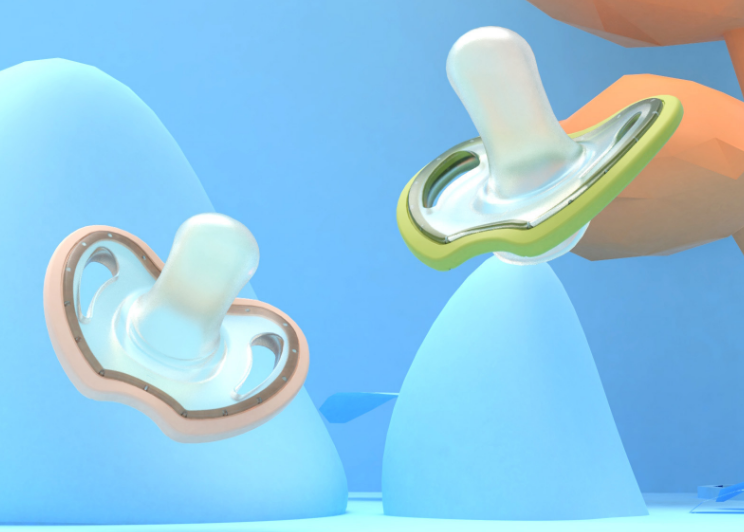Development of Starch Oxidation Modified Adhesives (2)
Yang Mingfeng et al. prepared oxidized corn starch by using 40% starch milk, stirring constantly, and stirrer speed of 60r/min. Add 2% NaOH to adjust the pH value of 8 to 10, slowly add sodium hypochlorite solution (effective chlorine 11% ~ 13%), the amount of sodium hypochlorite with effective chlorine accounted for 5% of the dry starch mass, plus dilute hydrochloric acid (2%) to maintain the pH. During oxidation, carboxyl groups affect the pH drop, and dilute lye should be added to keep the pH constant. After adding sodium hypochlorite solution to achieve the required degree of oxidation, neutralize to a pH of 6.0 to 6.5, filter it with sodium sulfite to reduce the remaining sodium hypochlorite vacuum filter, and wash with water. After washing, it is dried at 60°C to a moisture content of 10% to 12%, which is an oxidized starch product.
2 Oxidized starch modification progress Oxidized starch adhesives still have the following two problems in practical applications in corrugated boxes and other fields. The first is the gel phenomenon. After the storage period (usually 1-4 months), the adhesive often shows a gel phenomenon; this is because the molecules associate with each other to form a cross-network structure, and when the water merges and disperses, the starch molecules reassociate. At that time, a gelation phenomenon occurs, and secondly, the adhesive does not have strong initial adhesion and the natural drying speed is slow. Since the adhesive itself has a solid content of only 18% to 25%, and moisture is as high as 75% to 82%, moisture in the adhesive easily penetrates into the paper, and the initial moisture content of the carton produced using the adhesive is high. Higher, due to moisture gradients in the corrugated paper, if not dried in time, the paper blank will become soft, causing running edge and collapse. For oxidized starch adhesives, the initial tacking force is not strong, the natural drying speed is slow, the short storage period is short, and the contradiction between the adhesive's own fluidity and adhesive force is added to the oxidized starch by means of adding inorganic or organic substances. There are more and more reports about the modification of the mixture.
2.1 Adding inorganic filler driers A significant weakness of corn starch adhesives is the natural drying rate. An important measure to improve its performance is to add some inorganic fillers such as sodium modified bentonite, kaolin and other driers. Accelerate the filming speed of the glue and shorten the drying time. This is because the composition of these inorganic fillers is mainly A1 and Si (bentonite is Al2O3·4Si02·3H20; kaolin is Al2O3·2SiO2·4H20) and it is colloidal when dispersed in water, and has a large specific surface area and strong adsorption. Sex, capable of adsorbing positively charged electrolytes and negatively charged paper fibers to form a bridging effect, both increasing the solids content of the gum, reducing moisture, and plugging and filling the gaps in paper fibers (especially grass pulp) , reduce the moisture permeability, thereby increasing the adhesive's initial tack and drying speed. Experiments have proved that bentonite has good effect and low price and is an ideal quick-drying agent. The amount of starch is preferably 1.5-4% of the starch. When the amount is too large, the drying speed is increased, but the viscosity and fluidity are deteriorated. There is also added active light calcium carbonate (usually about 1.5%), Chen Xianhua added about 1.7% of active light calcium carbonate and a small amount of dispersant in the 19% solids glue solution, so that the drying time is 50rain dropped to 28min.
2.2 Addition of macromolecule substances In oxidized starch binders, organic macromolecules such as urea-formaldehyde rubber, modified urea formaldehyde, styrene-acrylic emulsion, epichlorohydrin, etc. are added to polar groups and oxidation thereof. Hydrophilic carboxyl groups, aldehyde groups, and hydroxyl groups in the starch molecules undergo cross-linking reactions to form polymers, and the hydrophobic capacity is enhanced. Most of the polymer materials added have a fast film formation rate, and they can often form a hydrophobic network structure after blending with oxidized starch adhesives. Once they are brushed on corrugated board, they form a film, thus preventing water. Penetration of the interior of the board to improve the drying speed and initial tack of the adhesive.
Taking polyacrylamide (PAM) as an example, the compatibility of PAM with starch in the film reduces the interaction between the starch molecules, thereby increasing the flexibility of the starch molecules. On the other hand, the addition of PAM plays a role similar to that of the reinforcing steel skeleton in the reinforced concrete, further suppressing the destruction of the plastic film and exerting the effects of toughening, thickening, and thickening. The amount of polyacrylamide is preferably 0.6% to 0.7% of the amount of starch. Qiu Qinghua added 2% to 10% of modified urea-formaldehyde glue in the glue solution, which shortened the drying time of the glue on paperboard by 46%. Guo Chengyuan added 8% to 10% of urea-formaldehyde resin to the glue and applied it to the surface of the carton. The surface was dry at room temperature for 1 hour and the moisture resistance was good. Zhang Xianhong introduced adding about 5% of plasticized modified urea-formaldehyde resin, which not only shortened the drying time, but also improved the initial tack, and the carton had better gloss after drying. Ma Wenwei introduced the addition of 5% epichlorohydrin-modified urea-formaldehyde resin to the oxidized starch gum. The drying time on the cardboard was only one-third that of the ordinary oxidized starch gum. Bai Liuqing added PVA and urea-formaldehyde glue at the same time, 0.5 to 1h cardboard can be formed. The preparation of oxidized starch by adding epichlorohydrin, polyvinyl alcohol, carboxymethyl cellulose, styrene-acrylic emulsion can also shorten the drying time.
Another practical problem encountered in the application of oxidized starch adhesives is the agglomeration of adhesives and the solution to this problem: First, the degree of oxidation of the oxidation reaction is strictly controlled; second, the production process is changed and the oxidized starch adhesive is directly Made of solids, this not only solves the problem of poor stability, but also facilitates long-distance transportation. Of course, production costs have also increased. The new approach is to add water-soluble polymer dispersants, such as polyvinyl alcohol, polyvinyl formal, etc., in the glue solution, which can extend the shelf life of the glue solution. The poly(vinyl formal) dispersion system is made of polyvinyl alcohol, and the ratio of the concentration of the dispersion system to the amount of the starch must be appropriate. The pure solid content of the polyvinyl formal in the entire dispersion system should not be less than 4% while the pure starch is The solid content should not exceed 10%. Using this without oxidative cracking, the glue obtained by direct gelatinization of starch is left for a year without mildew, the fluidity is not bad, and the adhesion does not decrease. Commonly used methods include the addition of vinyl acetate and polyvinyl formal glue in the glue solution, mixing of starch acetate and oxidized starch.
2.3 Effect of pasting agents Sodium hydroxide acts as a pasting agent. It binds to the unoxidized hydroxyl groups in oxidized starch and breaks the hydrogen bond. As a result, the interaction between the starch molecules decreases, and the swelling increases. It reacts with the functional group of oxidized starch to form sodium salt, which increases the hydrophilicity and solubility of starch. It also converts starch, pectin, protein and sugar in corn starch into gum, respectively, and increases the viscosity and hardness of the adhesive. At the same time, it also confers antifreeze properties to starch glue, increases the fluidity of starch glue, and makes it easy to store. If the amount is too much, although the adhesive has good transparency, good fluidity, and long storage time, the viscosity of the adhesive will decrease, and the foam will be easily generated, resulting in degumming; and the alkali is too strong and has a certain degree of corrosion to the paper fibers. Effect; If the amount is too small, it will result in insufficient starch gelatinization, small adhesion, and poor fluidity. Experiments show that the amount of alkali is controlled at 8% to 10% of starch.
2.4 Influence of cross-linking agent To increase the cross-linking degree and initial tackiness of the adhesive, borax was added as a cross-linking agent. The borax can form a multi-nuclear complex of network structure with the hydroxyl groups and aldehyde groups of the gelatinized oxidized starch in water, and has a cross-linking and thickening effect, so that the viscosity and surface tension of the starch binder are increased, and the cohesion force and stability are improved. Improved to improve adhesion and water resistance. However, if the amount is too large, the contact is excessive, and after the glue machine is easily drawn, the paper won't suck on the glue, or even lose its fluidity and stickiness. If the amount is too small, the contact is not enough to make the glue too weak and the adhesiveness is poor. It was determined that the amount of borax should be controlled at 2% to 3% of starch content.
3 Oxidized Modified Starch Products Outlook Oxidized starch adhesives have undergone physical and chemical modification studies. The initial tack strength, drying speed, and stability of the oxidized starch adhesives are significantly better than those of ordinary oxidized starch adhesives. Improvements have been made in practical promotion and application. However, people have also done a lot of work in starch modification. Wen Weihua prepared corn starch instead of starch adhesive, converted corn gluten into sodium alkyl sulfonate to increase fiber affinity, and saponified the fat in corn under alkaline conditions to improve the anti-aging ability of the adhesive. In the papermaking industry, anionic nitrile cyanide starch for use in coated papers, for the production of high-grade paper such as copper plate paper, and phosphorus ammonia double-denatured starches for the food industry, have expanded the scope of application of modified starch products. Liu Yanli et al. performed a systematic test on the properties of slurries and serosal membranes of oxidized esterified composite denatured starch, oxidized cross-linked composite denatured starch, and raw starch, and analyzed the results for a variety of modified starches, mainly acidified starch, oxidized starch, Crosslinked starch, esterified starch, grafted starch, etc. Among them, due to the degradation of oxidized starch and the introduction of carboxyl groups, the degree of polymerization decreases and the molecular flow performance increases. Other natural polymer materials such as konjac, etc., have superior properties to starch and have a certain degree of competitiveness in adhesives. Modified starch adhesives still have many problems to solve.
The Silicone Baby Pacifier Teether is made of food grade and bpa free silicone, The proven nipple shape on this pacifier is soft and durable, making it ideal for newborns and up, even when baby's teeth are coming in. orthodontic design respects the natural development of baby's teeth and gums. Our silicone infants pacifiers is made of hospital-grade, BPA-free and latex-free silicone for strength, comfort and durability , The Silicone Pacifier Nipples is100% silicone provides mom like softness. The ergonomic shape curves comfortably around your baby`s face, nose and chin. Rests snugly on baby`s face to stay perfectly in place.




YDS Product categories of Silicone For Babies, we are specialized manufacturers from China, Silicone Baby Pacifiers, Feeding Spoon, Silicone Baby Bibs Silicone Teething Toys,Silicone Plate & Placemat,Silicone Pacifier Holder,Silicone Pacifier & Nipple,Silicone Bowl wholesale high-quality products of Silicone Baby Products Our Factory Advantages:
1.Mold workshop and 2D and 3D engineer department
2.Solid siliccone compression machine and liquid silicone injection machine
3.Disney and Sedex 4P audit factory
4.ISO 9001,IATF16949,Raw material of FDA LFGB MSDS Certificates
. Look forward to your cooperation!
2.Solid siliccone compression machine and liquid silicone injection machine
3.Disney and Sedex 4P audit factory
4.ISO 9001,IATF16949,Raw material of FDA LFGB MSDS Certificates
. Look forward to your cooperation!
BPA Free Newborn Pacifiers,Breastfeeding Babies Nipples,Infants Pacifier Teether
Shenzhen Yindingsheng Technology Co., Ltd , https://www.ydsoemsilicone.com